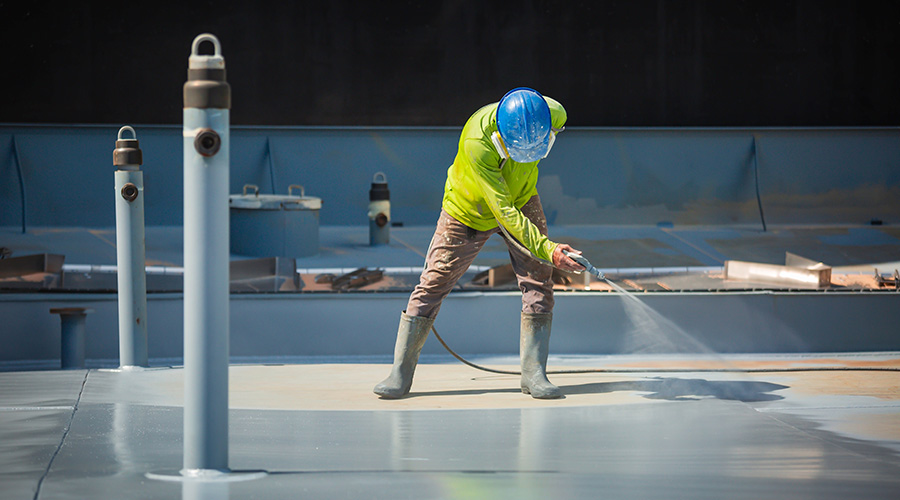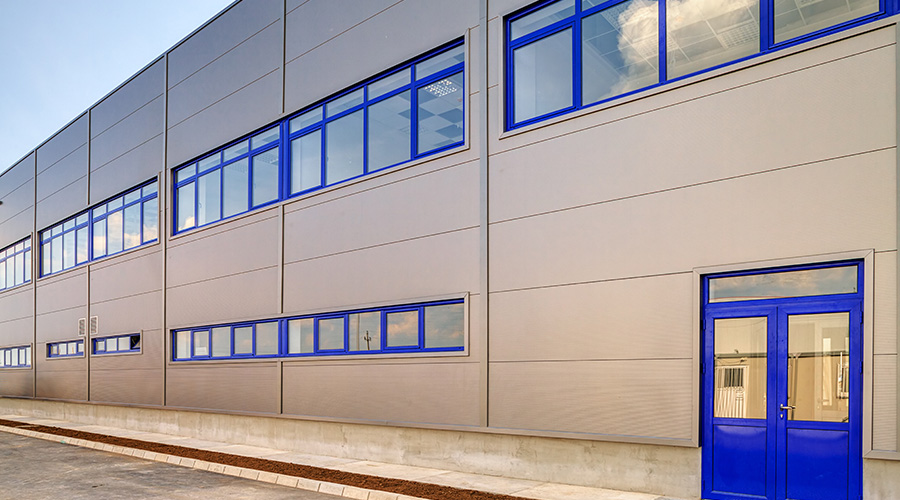Paint: Fresh Look At the Bottom Line
When it comes to paints and coatings, a combination of new technologies and new thinking makes it economical to keep buildings looking fresh
Nothing makes a building look old and worn more than marred and dirty walls. Even with the most diligent of schedules, maintenance crews can spend hours scrubbing and touching up scuffed walls and have little to show for their work .
“Any scuff or mark can make a building look run down,” says Steve Revnew, director of marketing for Sherwin Williams’ Architectural Coatings Division. “You can try to counter it with touch up, but that rarely delivers a clean, uniform finish. And, if you try to scrub off marks, it can leave a dull or shiny spot.”
Recent innovations in paints and coatings might be able to change that. Facility executives now have more options to keep buildings looking like new longer while reducing operating costs.
The biggest improvement is durability: Finishes can better tolerate daily abuse and more routine scrubbing. This gain is particularly apparent in flat-finish accent colors.
“Flat finishes with mar resistance deliver vibrant deep-tone color, yet they resist becoming shiny,” Revnew says.
Another innovation is more selection in water-based products with performance properties that exceed comparable alkyds or oil-based products, says Jeff Spillane, senior marketing manager for Benjamin Moore & Co. For example, new waterborne satin finishes are hard, durable and improve appearance by withstanding yellowing even better than alkyd versions, he says.
For exteriors, new air-dried fluoropolymer coatings mean that building owners can refurbish building panels with durable field-applied coatings rather than replacing them, says Roger Mabe, sales and marketing manager for PPG’s High Performance Coatings division. This new technology, designed to last 20 years, also allows for minor touch ups. Because of the life expectancy of air-dried fluoropolymers, some expenditures for repainting maintenance can be moved to budgets for capital improvements.
Costly Mistakes
Even though painting is a chore, it can be one of the most expensive projects, especially if facility executives focus only on purchase price and forget long-term product benefits. “Buying the cheapest gallon of paint is the biggest mistake a facility executives can make,” Mabe says.
The best way to reduce life-cycle costs is to consider cost per square foot per year. For example, if an exterior surface needs to be painted, the facility executives might consider a coating that costs $300 a gallon but offers a life expectancy of 20 years. “It’s a matter of painting something five times or painting it once,” Mabe says.
In reality, the logic of low life-cycle costs is all to often overlooked. “The use of premium paints is not the norm because pricing and bidding are tight,” Spillane says. “Usually in commercial projects, lower-grade paints are specified because that reduces costs.”
Even if lower-grade products are not specified, that is often what ends up on the walls if product performance specifications are not spelled out when projects are sent out for bids. Contractors typically base their material costs on low-end products so they can better compete. But the fact is that labor is typically the most expensive component of any paint job.
A paint job that costs $2,000 and lasts 5 years is a better long-term value than a $1,200 job that lasts two years. Unfortunately, Spillane says, “the time and labor costs between paint jobs usually doesn’t get factored in.”
To assure performance, look for products that are tested by ASTM International, which assures buyers that products perform according to industry standards, Revnew says.
Health Factors
Concerns about volatile organic compound (VOC) emissions are another factor facility executives need to be aware of. VOCs are solvents such as benzene, formaldehyde, toluene and xylem that are added to paints to help them dry faster. VOCs evaporate into the air easily. In indoor applications, the result is higher fume concentrations. EPA studies have shown that when paint dries, VOCs can climb to levels 1,000 times the levels found outside. This is particularly important to consider when paint is applied in occupied areas.
High VOC concentrations can be harmful to some individuals with allergies, nervous disorders and even cancer. VOCs also contribute to smog.
While regulations concerning VOCs vary from state to state and even from city to city, in general they demand significant reductions in the amount of VOCs paints can contain. California has some of the most stringent laws in the nation; other states are expected to follow suit.
A low-VOC product is not without its downside, Spillane says. Reducing the VOC content can alter a paint’s chemistry, making it harder to apply. And there are some types of paints and coatings that simply cannot be modified into a green product, he says.
One way to evaluate the environmental impact of a paint is to seek products certified by reputable nonprofit environmental organizations. For example, Green Seal identifies and promotes products that produce less pollution and waste. For paints to achieve Green Seal certification, the VOC content in a liter of the product, minus the water, cannot exceed 50 grams in flat paints and 150 in nonflat paints. The product also must meet criteria for scrubbability, washability and hiding power.
The Greenguard Certification Program by the Greenguard Environmental Institute (GEI) is similar. Greenguard standards are based on the U.S. Environmental Protection Agency’s purchasing standards, Washington State’s Indoor Air Quality Program, and Germany’s Blue Angel Program. So far, only a handful of products have achieved this designation.
Another question to be asked when selecting paints is whether to select products that include anti-microbacterial properties to inhibit growth of mold, Revnew says. Mold has become a high-profile issue for facility executives. Buildings with excessive moisture and poor ventilation are particularly vulnerable to mold.
The use of mildicides might be counterproductive to a green strategy, particularly because the long-term effects of these chemicals are unknown, Spillane says. One strategy might be to limit the use of mildicides to wet areas, such as kitchens and restrooms.
Even though paint typically accounts for a large portion of a building’s maintenance budget, analyzing paint and coating options too often falls to the bottom of the priority list. By taking the time to thoroughly research advances in paints and coatings, facility executives may be able to keep their buildings looking nicer longer while holding the line on long-term costs.
Lynn Proctor Windle, a contributing editor to Building Operating Management, is a freelance writer who has written extensively about real estate.
Related Topics:











